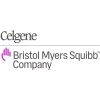
PD-1 Antibody (SHR-1210) Plus Capecitabine in Patients With Intrahepatic Cholangiocarcinoma After...
Intrahepatic CholangiocarcinomaSHR-1210 is a humanized anti-PD-1 Immunoglobulin G4 (IgG4) monoclonal antibody. This is an open- label,single center,non-randomized ,single arm exploratory study . This clinical study is an investigator-initiated clinical trial(IIT) .The objective of this study is to evaluate the efficacy and safety of therapy with anti-PD-1 antibody SHR-1210 plus Capecitabine in patients with Intrahepatic Cholangiocarcinoma After Surgery.

Study of Pembrolizumab and Single Agent Chemotherapy as First Line Treatment for Patients With Locally...
Non-small Cell Lung CancerThe purpose of this study is to understand if treatment with one chemotherapy medication combined with immune therapy (pembrolizumab) is tolerable and effective for patients with lung cancer and performance status of 2 (PS2), which means you have limitations in carrying out certain activities or spend up to half of your day resting.

AZD6738 Plus Durvalumab in Biliary Tract Cancer
Bile Duct CancerChemotherapy EffectThis trial will enroll advanced biliary tract cancer patients who have been previously treated with immunotherapy in either the 2nd or 3rd line. Patients will be treated with AZD6738 and Durvalumab combination.

Fruquintinib as a Maintenance Therapy Following First-line Treatment for Metastatic Colorectal Cancer...
Colo-rectal CancerThis study was a randomized, controled, multicenter, phase II clinical study evaluating the efficacy and safety of fruquintinib as a maintenance therapy following first-line treatment for metastatic colorectal cancer. This study will include the patients with confirmed unresectable metastatic left-sided colon cancer with RAS mutation or right-sided colon cancer who achieved stable disease (SD) or partial response (PR) or complete response (CR) via palliative first-line treatment. It's expected to include 110 patients and they will be randomly stratified at 2:1 into fruquintinib group and observation group based on whether bevacizumab is used and the primary tumor site, using the Interactive Network Response System (IWRS). The random No. corresponds to the respective patient. The enrollment time is expected to be 18 months, followed up for 24 months.

Binimetinib for People With Relapsed/Refractory BRAF Wild Type Hairy Cell Leukemia and Variant
Hairy Cell LeukemiaBackground: Most people with hairy cell leukemia have a BRAF gene mutation. They can be treated with BRAF inhibitors, drugs that target this mutation. For people who do not have this mutation, BRAF inhibitors are not a treatment option. We found that in hairy cell leukemia, when BRAF is not mutated, the MEK gene frequently is. Binimetinib is a MEK inhibitor which targets MEK. It is important to determine if this drug can be a good treatment option in those who cannot benefit treatment with BRAF inhibitors. Objective: To see if binimetinib is an effective treatment for hairy cell leukemia that does not have a BRAF mutation. Eligibility: People ages 18 and older with hairy cell leukemia without a mutation in the BRAF gene and whose disease either did not respond to treatment or came back after treatment Design: Participants will be screened with: Medical history Physical exam Blood and urine tests Lung and heart tests Eye exam Bone marrow biopsy: A needle will be injected through the participant s skin into the bone to remove a sample of marrow. CT or MRI scan: Participants will lie in a machine that takes pictures of the body. They might receive a contrast agent by vein. Before they start treatment, participants will have an abdominal ultrasound, pulmonary function tests, and exercise stress tests. Participants will take binimetinib by mouth twice daily in 28-day cycles. They will keep a medication diary. Participants will have at least one visit before every cycle. Visits will include repeats of some screening tests. Participants may continue treatment as long as their disease does not get worse and they do not have bad side effects. About a month after their last dose of treatment, participants will have a follow-up visit. They will then have visits once a year. ...

Rituximab and Pegylated Interferon α-2b in Patients With Indolent B-cell Lymphoma
LymphomaB-CellA phase 2 open label study to evaluate safety and activity of Rituximab(HLX01) in combination with Pegylated interferon α-2b in patients with newly diagnosed advanced indolent B-cell lymphoma.

TAEK-VAC-HerBy Vaccine for Brachyury and HER2 Expressing Cancer
ChordomaHER2-positive Breast Cancer1 moreA Phase 1 open label trial of intravenous administration of TAEK-VAC-HerBy vaccine in patients with advanced brachyury and/or HER2- expressing cancer. The study will be completed in 2 stages. In Stage 1 patients will be enrolled and treated according to a 3+3 dose escalation scheme. Up to 4 dose levels will be explored to determine the recommended dose of TAEK-VAC-HerBy for Stage 2 of the trial. Stage 2 will enroll either chordoma patients for treatment with TAEK-VAC-HerBy alone, or HER2- positive breast and gastric/gastroesophageal junction cancer patients for combination treatment of TAEK-VAC-HerBy vaccine and therapeutic HER2 antibodies (trastuzumab, pertuzumab). Patients in both stages will receive TAEK-VAC-HerBy intravenously, every three weeks, three administrations in total.

A Study of Low Dose Bevacizumab With Conventional Radiotherapy Alone in Diffuse Intrinsic Pontine...
DIPGIn this study, the investigators are testing improvement in survival outcomes in DIPG patients when stratified with MR perfusion score and treated with the said protocol. Newly diagnosed DIPG patients will undergo MRI perfusion study in addition to the usual MRI at diagnosis and will be stratified into hyperperfused or hypoperfused tumours. The hyperperfused patients will receive additional low dose Bevacizumab weekly with conventional standard radiotherapy. The hypo-perfused patients will receive ultra-low-dose radiotherapy fractionation equivalent to conventional RT biological dose.

LAM561 With RT and TMZ for Adults With Glioblastoma
Primary GlioblastomaGlioblastoma MultiformeThe proposed Phase IIB/III randomized, double-blind, placebo-controlled trial in subjects with newly diagnosed primary glioblastoma multiforme (ndGBM) aims to compare the efficacy and safety of LAM561 versus placebo, given with standard of care (SoC) therapy of radiation therapy plus temozolomide (TMZ), followed by an adjuvant treatment of 6 month period of TMZ and then LAM561 or placebo in monotherapy.

A Study to Evaluate the Efficacy and Safety of JCAR017 in Adult Subjects With Relapsed or Refractory...
LymphomaNon-HodgkinThis is a global Phase 2, open-label, single-arm, multicohort, multicenter study to evaluate efficacy and safety of JCAR017 in adult subjects with r/r FL or MZL. The study will be conducted in compliance with the International Council on Harmonisation (ICH) of Technical Requirements for Registration of Pharmaceuticals for Human Use/Good Clinical Practice (GCP) and applicable regulatory requirements. This study is divided into three periods: Pretreatment, which consists of screening assessments, leukapheresis and the Pretreatment evaluation; Treatment, which starts with the administration of lymphodepleting (LD) chemotherapy and continues through JCAR017 administration at Day 1 with follow-up through Day 29; Posttreatment, which includes follow-up assessments for disease status and safety for 5 years.
